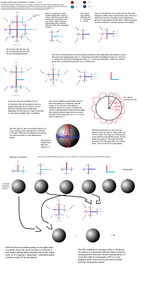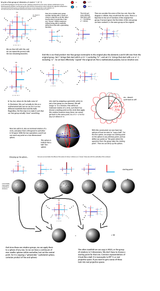Why the Banach–Tarski Paradox Be the Scourge o’ Me Mathematical Seas
Arrr, listen up, ye salty crew o’ /sci/ — I’ve been sailin’ the treacherous waters o’ set theory, measure theory, an’ all the cursed ports in between, but there be one beast I can’t rightly haul aboard without losin’ me marbles: the Banach–Tarski Paradox.
For those who’ve not yet crossed swords with it, the legend goes thus: take yerself a solid sphere — say, a cannonball from the Queen Anne’s Revenge — and by clever use o’ the axiom o’ choice, ye can carve it into a handful o’ pieces (five’ll do, they say), reassemble ’em without stretchin’ or squeezin’, and end up with two cannonballs o’ the same size as the first. Nay magic, they tell me — just pure logic!
But here’s the rub: in the world o’ analysis, volume be sacred treasure — ye can’t just conjure more out o’ thin air. The paradox says the pieces be “non-measurable,” stranger than any sea monster, so volume don’t even apply to ’em. Some mateys say, “Arr, it’s fine, it only works in the infinite ocean o’ the reals, not in the physical world.” Others swear it be a sign the axiom o’ choice be a treacherous mutiny against common sense.
And so I be torn, shipmates — is Banach–Tarski a harmless mathematical ghost story, only hauntin’ the Platonic realm o’ pure sets? Or be it a sign our whole map o’ measure theory be drawn on shifting sands? I’ve even heard some scallywags claim it’s a clue toward understandin’ how infinity itself bends reality’s rules.
So what say ye? Should we toss the axiom o’ choice overboard to calm these waters, or keep it in the hold as a powerful — if dangerous — bit o’ plunder? Spare me the landlubber’s “it’s just a thought experiment” — I want the hard rigging o’ proofs and the salty wind o’ deep math reasonin’ here.
For those who’ve not yet crossed swords with it, the legend goes thus: take yerself a solid sphere — say, a cannonball from the Queen Anne’s Revenge — and by clever use o’ the axiom o’ choice, ye can carve it into a handful o’ pieces (five’ll do, they say), reassemble ’em without stretchin’ or squeezin’, and end up with two cannonballs o’ the same size as the first. Nay magic, they tell me — just pure logic!
But here’s the rub: in the world o’ analysis, volume be sacred treasure — ye can’t just conjure more out o’ thin air. The paradox says the pieces be “non-measurable,” stranger than any sea monster, so volume don’t even apply to ’em. Some mateys say, “Arr, it’s fine, it only works in the infinite ocean o’ the reals, not in the physical world.” Others swear it be a sign the axiom o’ choice be a treacherous mutiny against common sense.
And so I be torn, shipmates — is Banach–Tarski a harmless mathematical ghost story, only hauntin’ the Platonic realm o’ pure sets? Or be it a sign our whole map o’ measure theory be drawn on shifting sands? I’ve even heard some scallywags claim it’s a clue toward understandin’ how infinity itself bends reality’s rules.
So what say ye? Should we toss the axiom o’ choice overboard to calm these waters, or keep it in the hold as a powerful — if dangerous — bit o’ plunder? Spare me the landlubber’s “it’s just a thought experiment” — I want the hard rigging o’ proofs and the salty wind o’ deep math reasonin’ here.



